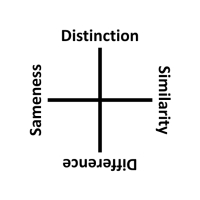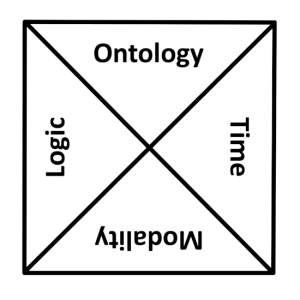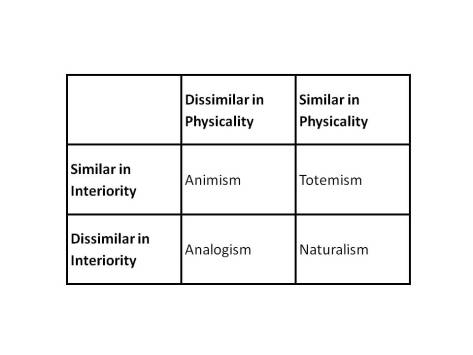 What do I mean by the subtitle of this blog? If you search on Google for “every fourth thing”, after you see a few references to this blog you see mentions like: being out of something at the druggist, or saying a particular actor is appearing in a random show, or showing extra interest to a comment from a spouse, or things being requested that are forgotten by waiters, or subtexts of statements issuing from celebrities or politicians, or noting that every such organism ever discovered since the beginning of time was in fact a beetle.
What do I mean by the subtitle of this blog? If you search on Google for “every fourth thing”, after you see a few references to this blog you see mentions like: being out of something at the druggist, or saying a particular actor is appearing in a random show, or showing extra interest to a comment from a spouse, or things being requested that are forgotten by waiters, or subtexts of statements issuing from celebrities or politicians, or noting that every such organism ever discovered since the beginning of time was in fact a beetle.
So for the most part, a frequency of occurrence, like you have everything of a certain type that exists or can be named or thought about or the facts of the world in a line, and you are counting down and picking out every fourth one of them. For the usual sense of the phrase “every fourth thing”, the three things not picked are ignored because they don’t meet the condition desired, but for the sense I want, they are still “fourths” of things. They are as important as the one picked, either because they implicitly complete the wholeness in some way, or complete some other wholeness.
Or instead of the other three things passed over completing the whole, you have to count out your fourths four times, so you are looking at sixteen things but skipping twelve things to end up with four fourths. Or here is another idea, you have everything (of a certain type) in the world in a bin, and the condition of selection is that it is a fourth by its nature rather than counting it out. This is probably closer to my intention, but the ambiguity between these alternate senses is why I continue to enjoy the subtitle “every fourth thing”.
Once you’ve figured out your selection process, do any four things you select comprise a four-fold, or do only things that go together in a “special way” deserve to be called that? Do you pick with replacement, or once picked do things become unavailable for further selection? You have quite a lot of picking to do, so I would say no to replacement at first consideration; but since I do reuse fourths ad nauseam, replacement must be ok.
And one of the other amusing things that I like about “every fourth thing” is that I can pretty much talk about anything I want to with the minor condition that it has four parts to it (or some multiple of four), or that it’s four things together, or whatever. I used to be far more rigorous and selective, but now I don’t really care so much, and I’ll burden my readers with all sorts of nonsense to while away the time until the sun explodes. There’s really a never ending supply that goes on and on and on (and on).
Putting aside those questions for now, since they are evidently more complicated than my initial expectations, for this analysis I am trying to enumerate the different ways that four fourths could combine to form a unity. This list depends heavily on notions of sameness and difference. I have also discussed notions of equivalence before, but I have not returned to those considerations for a while and they may be erroneous or incomplete. But let’s soldier on and at least give it an honest try before we are exhausted by all of our doubts or side issues.
The first way that comes to mind is if each of the fourths is either identically the same thing or merely indistinguishable from each other (via replacement or being indiscernible). I’m not sure at the moment how to differentiate the two concepts so I’ll lump them together for now. Mathematically, we could represent this by the simple sum 1 + 1 + 1 + 1, or maybe the lambda expression λa.4a. For an example we could use the protons in a beryllium atom, a four leaf clover, or the sides of a square.
 The second way is if each of the fourths is definitely a different thing. Then you might well ask why they are a unity and I’ll just say because I said so, that’s why! Or if I’m feeling magnanimous, I’ll try to at least give some reasons. Mathematically, we could represent this type of four-fold by a set, e.g. {a, b, c, d}, or by λa λb λc λd.a + b + c + d. As an example, a piano quartet would be nice consisting of piano, violin, viola, and cello. Also, the Four Causes, at first blush.
The second way is if each of the fourths is definitely a different thing. Then you might well ask why they are a unity and I’ll just say because I said so, that’s why! Or if I’m feeling magnanimous, I’ll try to at least give some reasons. Mathematically, we could represent this type of four-fold by a set, e.g. {a, b, c, d}, or by λa λb λc λd.a + b + c + d. As an example, a piano quartet would be nice consisting of piano, violin, viola, and cello. Also, the Four Causes, at first blush.
For the third way, we could consider the cross product of two sets, each having two elements, say {A, B} x {C, D}. Again, the linear expression λa λb.2a + 2b is different. And most real world examples have opposite relations like {A, ~A} x {B, ~B} (what I’ve called double duals before), so I’m having difficulty here. Maybe there are really 3 ways here that should be differentiated. Examples:  the nucleus of a helium atom, Heidegger’s Four-fold, the Four Qualities, etc.
the nucleus of a helium atom, Heidegger’s Four-fold, the Four Qualities, etc.
For the fourth way, let’s consider the fourths to be distinguishable, but there also is an order to them. Mathematically, how about the ordinal 4 = {0, 1, 2, 3} (but not the cardinal!). As an example, consider common time in music (4 4 time), having four quarter notes to a measure. The notes are different because of their order in the sequence, even if they are the same tone. Also the Four Seasons, except that it’s a double dual plus it has a sequence.
Now the fifth way. Mathematically: the Cartesian Plane, R x R, or the Complex Plane, C. Latitude and longitude, or maybe even North, South, East, West are examples. For every ordered pair (x,y) there is (-x, -y), (x, -y), and (-x, y). Or complex x + iy, -x – iy, x – iy, -x + iy.
Sixth. Three and one. Not the song “Three and One” by Thad Jones, even though it’s a great tune. Not the object (or is it the subject) of Trinitarianism, because that’s three IN one, and also the three are different. Ditto for three ingredient recipes. No on the yet to be released 4th Neon Genesis Evangelion movie 3.0 + 1.0, since that’s also three different things as far as I know (the first three movies). Perhaps ammonia (NH3) is an appropriate example with three hydrogens and one nitrogen . But I can’t say I’m very excited about this one, but it may be important due to my selection questions above. Now do the math: λa λb.3a + b.
Seventh. Two and one and one. λa λb λc.2a + b + c. I like this one even less, but at least it lets you see that the lambda expressions can be put into hierarchical order based on partitions of four. Perhaps the nuances of further structure can be teased out by different expressions, such as set theoretical or logical (instead of arithmetical).
Further Reading:
https://en.wikipedia.org/wiki/Axiom_of_choice
https://en.wikipedia.org/wiki/Beryllium
https://en.wikipedia.org/wiki/Piano_quartet
https://en.wikipedia.org/wiki/Time_signature#common_time
https://en.wikipedia.org/wiki/Category:Trinitarianism
[10.156, *10.190, *11.80, *11.81]
<>
 If one was writing a book that described the entire world or universe as it is, how should that book present the world to us? It is not enough to speak truly, itemizing “all that is the case”, one must also use the right notions while doing so.
If one was writing a book that described the entire world or universe as it is, how should that book present the world to us? It is not enough to speak truly, itemizing “all that is the case”, one must also use the right notions while doing so.















